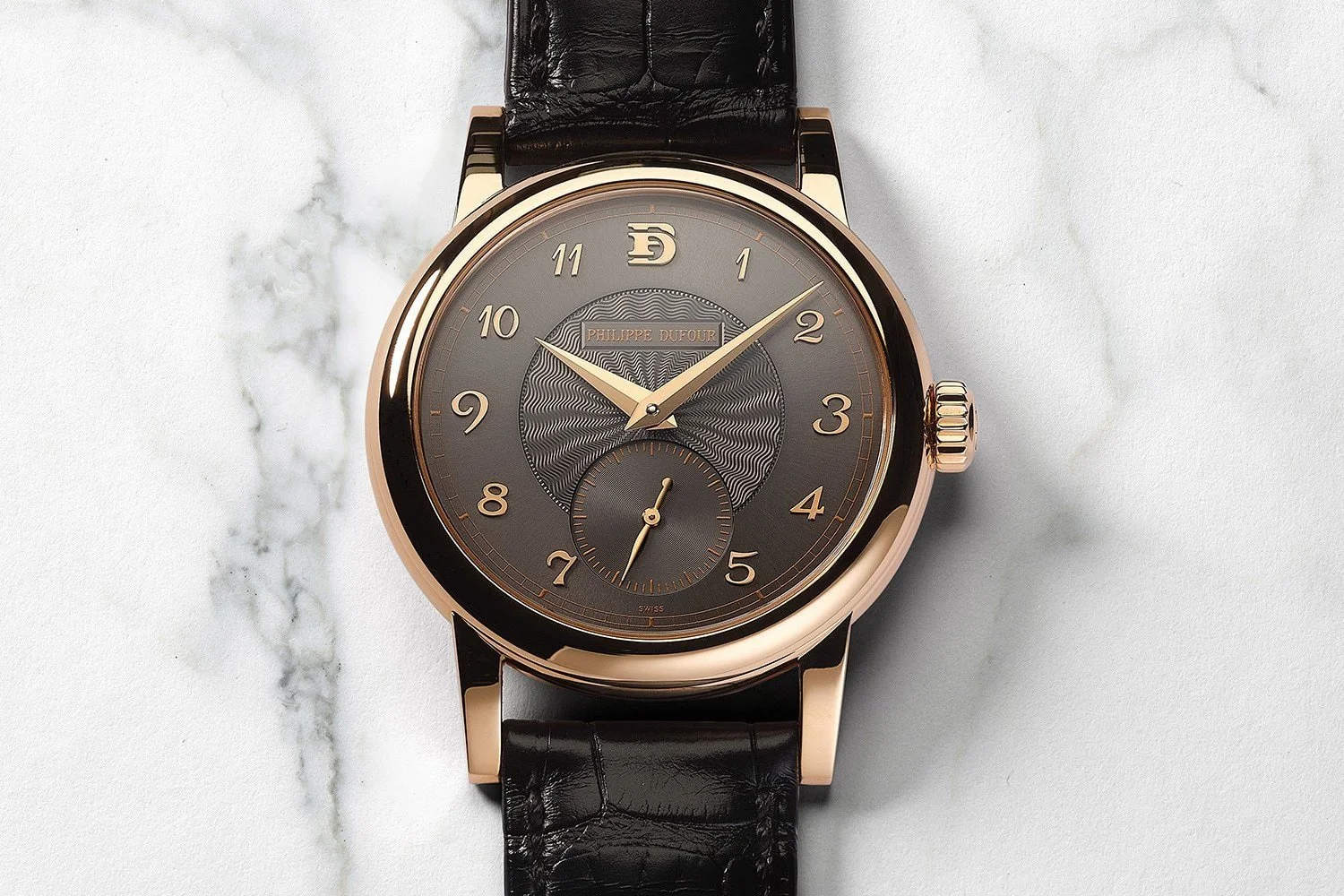How time-only watches became grails
Chronomètre Contemporain Rexhep Rexhepi
At nearly any moment in the history of watchmaking, it would have been difficult for collectors, auctioneers, or industry executives to imagine time-only watches at the pinnacle of the craft. That is until recently. Over the last decade, the pendulum has fully swung, placing many time-only watches in competition for the most coveted timepieces in the world. To name only a few, we have Rexhep Rexhepi’s Chronomètre Contemporain, Philippe Dufour’s Simplicity, F.P. Journe’s Chronometre Bleu, Kari Voutilainen’s Vingt-8 as well as the slew of ultra-hyped, time-only sports watches from Patek Philippe’s Nautilus to Audemars Piguet’s Royal Oak. All have become unobtainable with astronomical secondary market and auction prices.
An unimaginable reality not long ago, the question is, how did time-only watches ascend to such heights that they regularly attain grail status amongst collectors? What factors drove the rise of “simple” timepieces to the top?
In order to understand this exceptional modern phenomenon, we’re going to walk through the impact the 2008 Financial Crisis had on the research and development of complications, the pragmatism of manufacturing time-only watches, the appeal of the mythos of simplicity, and the final push to grail status from the auction houses.
What’s after an era of haute complications?
First to lay some groundwork, the mechanical watch industry survived the Quartz Crisis by leaning heavily into complications. With Jean-Claude Biver at the helm, brands like Blancpain sought to reinvigorate ultra-complicated watchmaking with the 1735, touted as the world’s most complicated wristwatch in the early 1990’s. Guenther Bluemlein responded with IWC’s Il Destriero Scafusia, the grand complication wristwatch, as well as demonstrated that German watchmaking could once again produce tourbillon timepieces with A. Lange & Söhne’s resurrection (a real shocker then in 1994). More or less, the entirety of high-end watchmaking participated in a complications arms race, beginning in the mid-1980’s and continuing decades. At the high end of the market, that approach to watchmaking caused a rising tide that lifted all boats after near collapse.
IWC Il Destriero Scafusia
When we spoke with master watchmaker Jean-François Mojon for our article on new complications development, he mentioned that it was around the late-2000s that brands began to shift their approach. Triggered by the 2008-2009 Global Financial Crisis, the industry began to trim and reallocate their budgets. What previously was used for research and development of new complications or ultra-complicated timepieces pivoted toward finding ways to create novelty with the same set of tried-and-true complications – tourbillons, various types of chronographs, and minute repeaters. This entailed designing and creating more novel displays of time, rejigging complications for alternative purposes (like the Parmigiani GMT Rattrapante, as one example). Ultimately more cost-effective, fine watchmaking has been dominated by this trend since 2008.
Right in time, the pragmatism of time-only in an era of mass consumption
There’s always been a strange coincidence that time-only watches became coveted as grails exactly at the same time social media pushed luxury goods firmly into the realm of mass consumption. It almost feels like time-only was a cheat code for the problems of production and distribution. Imagine how challenging it would be to purchase watches from our favorite brands if they exclusively created ultra-complicated timepieces – you can cut everyone’s already-extremely-limited-current production by an additional 80%.
The baseline truth is that there is a virtuous cycle in play in the watch industry between the rapidly growing market and grail status of many time-only watches. The timepieces with fastest research, development, and production cycles are the same watches everyone desires most.
To be clear, there’s no “Illuminati” conspiracy here that brands are feeding the masses time-only watches. More so than any alternative, this is a much more healthy equilibrium struck between brands and consumers. Manufacturers can produce more time-only watches and in exchange, more collectors have the ability to own a piece of the history. Of course, the pragmatism of manufacturing time-only watches is only as good as its sales. Here, the mythos of simplicity carries a massive appeal to collectors and independent watchmakers, not mainstream brands, have done the most to further the allure.
Simple seduction, the “indie” mythos of time-only grails
George Sand, one of the most prolific and popular French writers during the 19th century, penned a romantic idea that “simplicity is the most difficult thing to secure in this world; it is the last limit of experience and the last effort of genius.” In the watch industry, this idea has become accepted as truth. Philippe Dufour, Rexhep Rexhepi, Kari Voutilainen, Hajime Asaoka, Beat Haldimann, to name only a few, have all walked this path. They launch with ultra-complicated timepieces and progress toward finely crafted time-only watches.
Window photo Rexhep (Photo credit Fred Merz/Lundi13)
Whether it is true that simplicity is more challenging than complexity is completely beside the point – at least for this article. More than anything else, this idea is incredibly attractive. It has fueled the mythos surrounding many of the world’s top, independent watchmakers and has revitalized time-only watches as legitimate expressions of haute horlogerie after the previously mentioned era of complications. If this idea didn’t have appeal, that simplicity were not valued as more challenging than complexity, then there would be no minimalist, time-only grails.
The final push, auction results
Though these three, less obvious factors play a role in driving time-only watches to the status of grail, there is an enormous elephant in the room: auction results. The three reasons above are working in the background, conditions for time-only watches to become grails, whereas auction results are much more direct in shaping this phenomenon. Hammer prices are the final push.
Dufour’s 20th Anni Simplicity
Over the past decade, all of the watchmakers alongside their time-only “grails” have commanded massive results at auctions. Dufour’s 20th Anniversary Simplicity sold for more than CHF 1m at auction in 2020. Two years later, a white gold Simplicity fetched about US$1m once again. Rexhep Rexhepi’s Chronomètre Contemporain for the Only Watch Auction fetched CHF800,000. The list of time-only grail watches, those mentioned above, pulling prices well above retail goes on and on. These prices play an enormous role on their status as grail timepieces, especially in an era of collecting where the relationship between grail status and price tag are so directly correlated.
There’s no indication that this phenomenon will change in the near future, nor should it necessarily. That said, the pendulum always swings. Maybe in 5-10 years, ultra-complicated watches will be en vogue or a complications arms race will begin anew.




